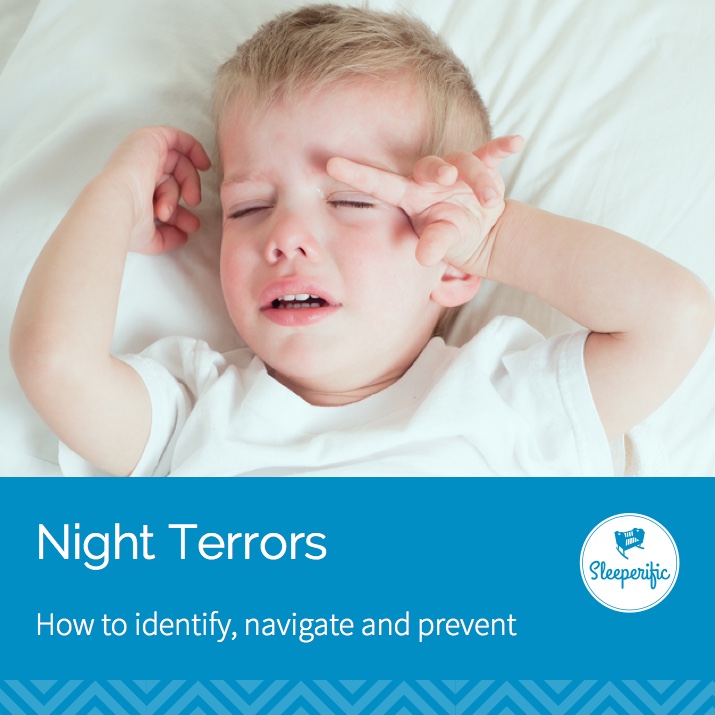
Night terrors are not bad dreams. You might not even know that what you’re seeing from your child is a night terror the first time it occurs.
Typically occurring in children between 3 and 12 years of age, an estimated 1 to 6 percent of children experience terrors[1].
Some characteristics of night terrors include:
- Timing: Early after onset of night sleep or in early morning when coming out of a deep sleep (Night terrors occur in non-REM stages of sleep)
- Yelling, screaming, shouting
- Thrashing, kicking, pushing away you or objects that aren’t there
- Child appears anxious, fearful or panicked
- Sweating, increased heart rate
- May appear awake but will not be responsive
- Most significantly: child has no memory of the event (if your child recalls the event, it was not a night terror)
Risk factors
- Overtiredness and fatigue
- Variable sleep schedule
- Significant changes or stressors in a child’s life (beginning childcare, new school, change in family arrangements, new sleep environment, etc….)
- Illness or fever
- Family history of partial-arousal parasomnia ie: sleep walking
How to manage?
If your child has a terror, don’t disrupt them. Ultimately, going sleep will end the terror. Speaking to or touching your child unnecessarily will prolong the terror. Stay with your child, keep him or her safe, guide back to bed as necessary, but try to keep intervention which might disrupt sleep, to a minimum. If your child is getting up and walking around during their terror, consider a gate at their door or the top of stairs, and ensuring exterior doors are not easily opened.
Prevention
The majority of night terrors are caused by overtiredness. That means if we can get the child MORE sleep, we can often prevent the terror from occurring. The easiest way to achieve more sleep is with an earlier bedtime, as little as 15 minutes can do the trick. Be diligent about following regularity in your child’s schedule until the terrors have stopped.
If terrors occur with regularity at a particular time of day, you can gently rouse your child (just enough so they might sigh and roll over and go back to sleep) in the 30 minutes prior to the regular terror. The goal of this strategy is to disrupt the sleep cycles just enough to prevent the terror.
If terrors persist, and recur at least 3x per week, talk to your child’s doctor. There could be contributing factors to the night terrors, like sleep apnea or restless leg syndrome.
References
[1] Rosenberg, Robert S. Sleep Soundly Every Night, Feel Fantastic Every Day. New York: Demos Health, 2014. Print.
About the author:
 |
Krista is a mother of 3 (+1 dog who believes she’s people), a wife to a wonderful husband, and the owner and founder of Sleeperific. Even though she’s been in the sleep consulting biz for 4 years, she still gets really excited when she’s hired by a sleepy family. |
